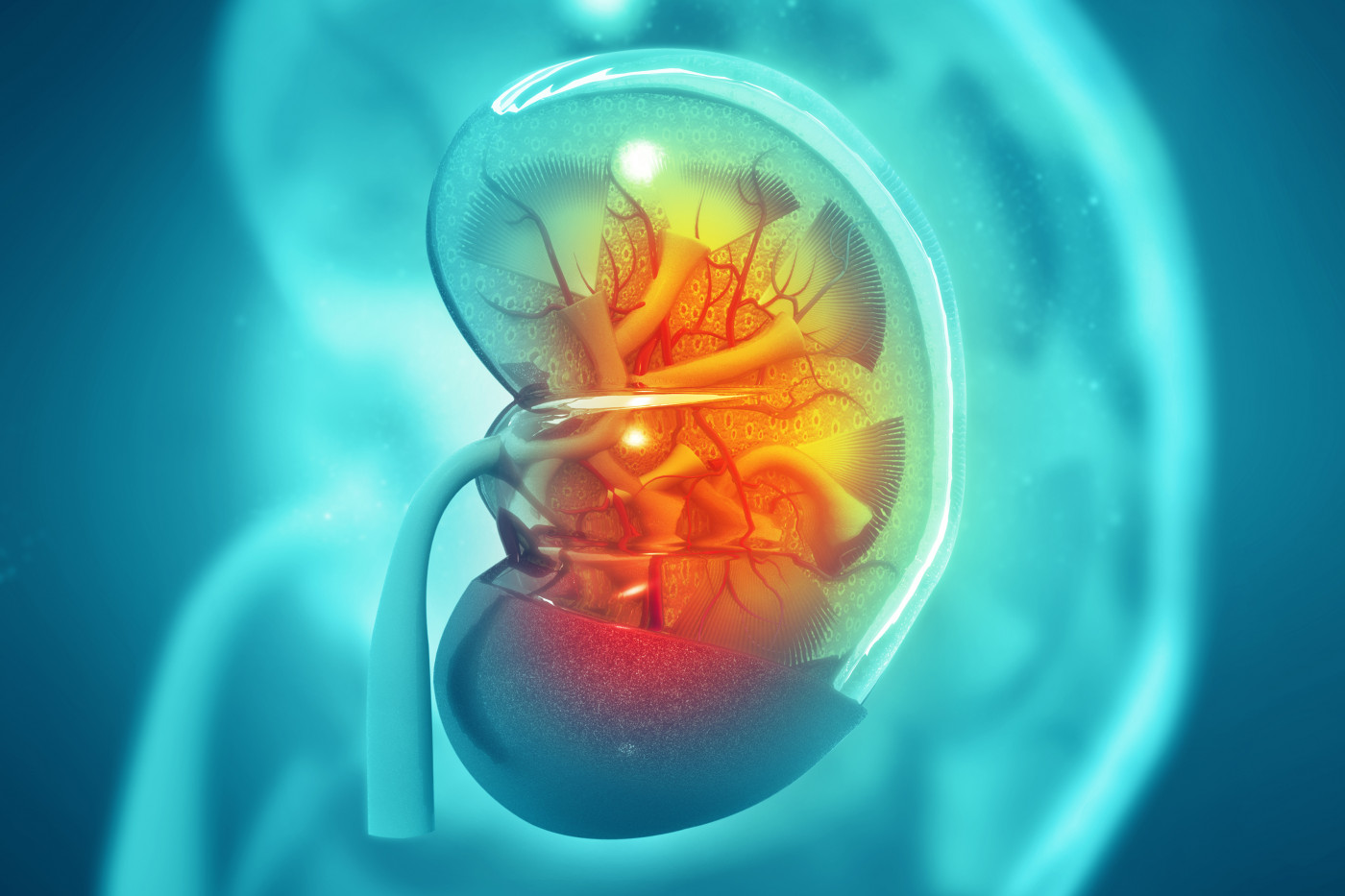Rare Case of aHUS Found in Man with Lipoprotein Glomerulopathy

crystal light/Shutterstock
Researchers have reported a rare case of atypical hemolytic uremic syndrome (aHUS) in a 21-year-old Swiss-Indonesian man with lipoprotein glomerulopathy (LPG), an inherited kidney disease associated with fat accumulation in the organ’s small blood vessels.
The findings suggest that the later development of aHUS, which also affects the kidney’s small blood vessels, may have accelerated the patient’s kidney function decline.
The study, “Case Report: Lipoprotein Glomerulopathy Complicated by Atypical Hemolytic Uremic Syndrome,” was published in the journal Frontiers in Medicine.
aHUS is a rare disease characterized by the formation of blood clots in small blood vessels, particularly those in the kidneys, which may result in red blood cell destruction, low platelet counts, and kidney failure.
The condition is caused by the abnormal activation of the alternative pathway of the complement system, a set of more than 30 blood proteins that contribute to the body’s natural immune defenses. An estimated 60% of patients carry aHUS-predisposing mutations in complement system genes.
LPG is a rare inherited kidney disease caused by mutations in the APOE gene. This gene provides instructions for making apolipoprotein E, a protein involved in the transport of cholesterol and other fatty molecules in the blood and the central nervous system (brain and spinal cord).
LPG is characterized by the formation of fat-associated clots due to the deposition of fatty molecules in severely dilated small blood vessels in the kidney, leading to increased proteins in the urine (proteinuria) with or without an abnormal fatty molecule profile, and ultimately to kidney failure. High blood pressure is also a common symptom.
To date, 200 cases of LPG have been reported worldwide, most involving Asian patients.
Researchers in Switzerland have now documented the case of a 21-year-old Swiss-Indonesian man who developed aHUS seven years after his LPG diagnosis.
At the age of 14, the patient was found to have high blood pressure during a school-based examination, and further tests showed he also had proteinuria and high cholesterol. This prompted a kidney biopsy, which established an LPG diagnosis through the detection of fat-related clots in dilated small blood vessels.
The only history of kidney disease in his family was his grandfather in Indonesia, who received a kidney transplant at the age of about 60 years.
Genetic testing revealed the presence of a known disease-causing APOE mutation mostly described in China. “As the Chinese are the most significant ethnic minority of foreign origin in Indonesia, it can be speculated that our patient’s ancestors originate from China,” the researchers wrote.
No signs that would have suggested aHUS were detected at this point.
The boy started standard treatment to reduce blood pressure and fatty molecules in the blood. Since he emigrated to Indonesia soon after his LPG diagnosis, medical follow-up was lost.
Seven years later, the patient, 21 and back in Switzerland, was admitted to a nephrology clinic, complaining of fatigue, upper abdomen pain, and dizziness. Examination showed he had high blood pressure, but a normal fatty molecule profile, even though he was no longer on fat-lowering therapy.
“This suggests that the severe [proteinuria] at the initial presentation contributed to the altered [fatty molecule] profile,” the researchers wrote.
Further tests indicated end-stage kidney disease, progressive low platelet counts, red blood cell destruction, and overactivation of the complement system. Genetic analysis of complement system genes revealed the presence of a mutation in the CFHR1 gene, which is known to increase the risk of aHUS.
The man started dialysis shortly after his first emergency consultation in the clinic and was listed for a kidney transplant. His aHUS treatment plan included Alexion’s Soliris (eculizumab) in the first months after transplant, with monitoring of its effects on complement system activation.
While researchers do not know what triggered the patient’s aHUS and to what extent it accelerated his kidney function decline, they noted that a lab result from Indonesia showed the patient had low platelet counts two months before returning to Switzerland.
“This indicates that aHUS may have contributed to the [kidney] damage over a prolonged period,” the researchers wrote.
They also noted that additional factors, such as high blood pressure, and other unknown risk factors, “must have contributed to this patient’s disease course.”






